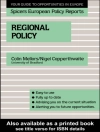Mediated Democracy: Politics, the News, and Citizenship in the 21st Century takes a contemporary, communications-oriented perspective on the central questions pertaining to the health of democracies and relationships between citizens, journalists, and political elites. The approach marries clear syntheses of cutting-edge research with practical advice explaining why the insights of scholarship affects students’ lives. With active, engaging writing, the text will thoroughly explain why things are the way they are, how they got that way, and how students can use the insights of political communication research to do something about it as citizens.
विषयसूची
Tables and Figures
About the Authors
Acknowledgments
Preface
Chapter 1: Mediated Democracy: An Introduction
What Is Political Communication?
Why Political Communication Matters
The Alarm–Patrol Hybrid Model
Political Communication Helps Determine Winners, What We Know, and What We Think About
Twenty-First Century Political Communication, Democratic Citizenship, and You
Communication and Civic Competence in the Twenty-First Century
From Research to Real Life
Chapter 2: Why the News Is the Way It Is
Journalistic Models, Routines, and Professional Norms
Indexing
Journalists’ Perceptions of Themselves and Their Jobs
Journalists’ Perceptions of Their Audience
Market Forces and the News
Audience Demands and Behavior
The Future of News
From Research to Real Life
Conclusion
Chapter 3: The Communication Ecology: Information Flows and Public Opinion
The Twenty-First Century Communication Ecology: An Early Check-In
The Structure of the Communication Ecology
Hybridization and Information Flow in the Communication Ecology
From Research to Real Life
Conclusion
Chapter 4: Are Media Biased?
Defining Media
Defining Bias
Partisan News
Fake News
From Research to Real Life
Chapter 5: The Politics of Attention
How Politicians Communicate With Media
How Politicians Communicate With the Public
How the Public Talks Back
Talking Politics Online
Communicating Which Issues Are Important
From Research to Real Life
Chapter 6: Framing the News: When and How It Matters to the Audience
Preferences and Frame Types
The Future of Framing Research
From Research to Real Life
Chapter 7: Who’s Biased Now?: How People Interpret the Media They Use
Choosing Media Messages
Interpreting Media Messages
Reacting to Media
From Research to Real Life
Chapter 8: Political Advertising
Creating Campaign Ads
Ad Spending
Ad Content
News Media and Political Ads
From Research to Real Life
Chapter 9: Mediated Elections
Fundamentals of Elections
Roles of the Media in Elections
Types of Election Coverage
Gender, Race, and Election Coverage
Social Media and Elections: The New Frontier
Effects of Mediated Campaigns
From Research to Real Life
Chapter 10: Governing, Policymaking, and the Media
The News Media as a Political Institution
Agenda-Setting and Public Policy
Journalistic Methods That Contribute to Policy Action
From Research to Real Life
Chapter 11: The Future of Mediated Politics
New Technology
The Public–News Media Relationship
A Changing News Industry
The Great Divide
Media and Politics Post-Trump
Notes
Index
लेखक के बारे में
Michael W. Wagner is assistant professor in the School of Journalism and Mass Communication at the University of Wisconsin-Madison. There, he is also the Louis A. Maier Faculty Development Fellow and holds an affiliated position in the Department of Political Science. He has won awards for his teaching and scholarship in the area of political communication in American politics.












